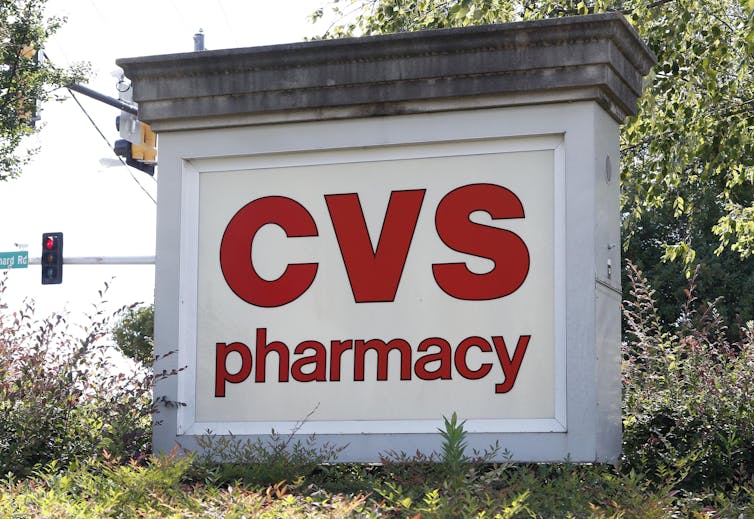Why thousands are getting hit with unexpected medical bills
- Written by Simon F. Haeder, Assistant Professor of Political Science, West Virginia University
Hardly a week goes by without another story[1] in the media covering a family somewhere in America dealing with an outrageous medical bill. Yet, in more and more cases, these families don’t have junk insurance[2], or lack coverage altogether. Indeed, they have what Americans would consider decent coverage, either through their employer or an Affordable Care Act marketplace[3]. They also followed, or so they thought, the rules of their insurance policy requiring them to seek care inside their provider network. Yet, they are slapped with surprise bills, and often threatened by bankruptcy.
What gives?
In my view as a health care policy researcher, the increasing occurrence of surprise medical bills is not an accident. Rather, it is a reflection of a larger trend in the American health care system. There’s been a massive wave of consolidation in the health care business[4] to gain greater bargaining clout. These surprise bills are a byproduct of the wrangling between two sets of players – insurers and care providers – a battle of giants that often leaves patients holding the bill.
Recent efforts at the federal level[5] to provide protections to patients are long overdue. Yet, it is unclear whether patients will see any tangible outcomes, as insurers and providers are fiercely protecting their interests. Even if successful, these protections would likely only alleviate the most glaring problems of surprise bills untouched.
What’s going on here?
 Patients in emergency rooms are receiving surprise bills more often than in years past.
Monkey Business Images/Shutterstock.com[6]
Patients in emergency rooms are receiving surprise bills more often than in years past.
Monkey Business Images/Shutterstock.com[6]
The story is nearly always the same. A patient, often in an emergency, receives care, as required by his or her insurance coverage, in a hospital that was part of their provider networks.
Patients usually assume that all doctors participating in their treatment in the facility are also covered in their network. However, while their primary providers may be part of their network, ancillary physicians with little or no contact with the patient, such as anesthesiologists and radiologists[7], may not be. And, in many hospitals, the very doctor who takes care of you in an emergency – the ER doctor[8] – may not have any insurance contracts whatsoever.
Patients may only realize their miscalculation when it’s too late – when “surprise” bills start arriving in the mail, often outrageously high, a few week later. Not even members of Congress are immune from the practice, as Rep. Katie Porter[9], D-Calif., experienced when she received a US$2,800 out-of-pocket bill after an appendectomy.
The results for patients are often devastating. While the full extent of the problem is unclear, studies have shown, that about 20% of inpatient emergency department cases result in surprise bills[10]. Insurance companies will usually pay a part of the bill, but physicians then send the remainder directly to the patients.
The sums are often horrendous and bear little correspondence to the cost of the care provided: $229,000 for spinal fusion surgery[11], $117,000 for neck surgery[12], or $250,000 for back surgery[13]. These are bills after insurance companies paid for part of the bill. And of course, the threat of being turned over to a collection agency[14] looms largely over patients’ heads, with medical debt typically listed as the primary reason for being contacted by a collection agency.
The larger picture: Battle of the giants
The distinguishing characteristic of the U.S. health care system is its high cost[15]: Americans simply pay more for health care than their counterparts in the developed world.
Given the dual threats of high costs and large uncertainties, Americans have long relied on insurance arrangements when it comes to financing their health care needs. As a result, patients today are trapped between two massive bureaucracies intent on maximizing their income: providers and insurers.
For decades, Americans and public payers have, by-and-large, accepted accelerating health care costs. Yet, with costs around 18% of GDP[16] and exerting intense pressure of public and private budgets[17], the health care sector has drawn greater scrutiny.
As a result, pressure to contain costs have begun to emerge, leading to intensifying conflict between the two entities. More recently, these developments have triggered significant and increasing consolidation efforts on both sides.
 A CVS sign in Ridgeland, Miss.
Rogelio V.. Solis/AP Photo[18]
A CVS sign in Ridgeland, Miss.
Rogelio V.. Solis/AP Photo[18]
Health insurers are seeking mergers with other insurers. Recent examples include Centene buying WellCare[19] but also Cigna’s ill-fated attempt to merge with Anthem[20] and Aetna’s and Humana’s aborted consolidation attempt[21].
Insurers are also attempting to expand beyond their traditional role into the direct provision of services, including Aetna’s efforts to team up with drugstore chain CVS[22], and Cigna merging with Express Scripts[23]. Insurers are trying to get greater market power, not only versus other insurers, but perhaps even more prominently, against other stakeholders in the health care sector.
On the other hand, providers have not been idle either. Mergers and acquisitions are at an all-time high[24]. Hospitals are merging with other hospitals[25]. But they are also investing heavily in construction activities[26], expanding or purchasing physician groups[27] and ambulatory and specialty surgery centers[28], as well as imaging, diagnostic and laboratory services[29].
Both sides have sought to capitalize on their increasing clout.
Many providers have sought to utilize their new market powers to gain concessions from insurers in the form of larger reimbursements for patient care. Insurers, for their part, have resisted these demands where possible. Most importantly, they have started to deliberately exclude certain high-cost providers from their networks. These range from prominent hospitals like Cedars-Sinai[30] to rural specialists like endocrinologists[31].
In this struggle, certain providers – those you do not have a choice in selecting, such as emergency room doctors, anesthesiologists and radiologists[32] – hold a more pivotal role in the provision of health care. To maximize their profits, they often have deliberately chosen not to contract with any insurers.
As insurers reduce the number of providers in their networks, patients benefit from lower premiums[33]. However, with fewer providers to see for treatment[34] patients are, of course, more likely to obtain treatment out-of-network.
As insurers and providers push back on paying bills for care, patients usually end up holding the bill.
Is Congress fixing the mess?
Surprise bills are nothing new. However, patients caught between two massive competing bureaucracies offers a compelling narrative for policymakers. The issue of surprise medical bills has been so outrageous that Democrats and Republicans in Washington, D.C., and across state legislatures, have started to work together to offer patients with some sort of protection.
So far, some 20 states[35] have established various forms of consumer protections. These protections differ significantly, and often are rather limited. Moreover, these protections are significantly limited by the reach of state regulators, leaving many Americans largely unprotected.
The federal government is starting to the jump on the bandwagon. The recent proposal by Sens. Patty Murray and Lamar Alexander[36] serves just as the last example[37].
And yet, surprise bills are merely the tip of the iceberg of what ails the American health care system. Current proposals leave other issues, such as inadequate networks[38] and inaccurate provider directories[39] largely untouched.
Ultimately, I think we need more comprehensive solutions that address the excessive costs of the broken U.S. health care system. Everything else, while crucial to individual patients, fails to offer substantial systemwide improvements.
References
- ^ another story (www.kut.org)
- ^ junk insurance (theconversation.com)
- ^ Affordable Care Act marketplace (onlinelibrary.wiley.com)
- ^ massive wave of consolidation in the health care business (revcycleintelligence.com)
- ^ Recent efforts at the federal level (www.healthaffairs.org)
- ^ Monkey Business Images/Shutterstock.com (www.shutterstock.com)
- ^ anesthesiologists and radiologists (www.healthaffairs.org)
- ^ ER doctor (www.healthaffairs.org)
- ^ Katie Porter (freebeacon.com)
- ^ that about 20% of inpatient emergency department cases result in surprise bills (www.healthaffairs.org)
- ^ $229,000 for spinal fusion surgery (khn.org)
- ^ $117,000 for neck surgery (www.nytimes.com)
- ^ $250,000 for back surgery (www.nytimes.com)
- ^ collection agency (khn.org)
- ^ distinguishing characteristic of the U.S. health care system is its high cost (www.healthaffairs.org)
- ^ around 18% of GDP (www.cms.gov)
- ^ exerting intense pressure of public and private budgets (www.macpac.gov)
- ^ Rogelio V.. Solis/AP Photo (www.apimages.com)
- ^ Centene buying WellCare (www.latimes.com)
- ^ Cigna’s ill-fated attempt to merge with Anthem (money.cnn.com)
- ^ Aetna’s and Humana’s aborted consolidation attempt (money.cnn.com)
- ^ Aetna’s efforts to team up with drugstore chain CVS (money.cnn.com)
- ^ Cigna merging with Express Scripts (money.cnn.com)
- ^ Mergers and acquisitions are at an all-time high (revcycleintelligence.com)
- ^ Hospitals are merging with other hospitals (www.kaufmanhall.com)
- ^ investing heavily in construction activities (www.beckershospitalreview.com)
- ^ expanding or purchasing physician groups (www.beckershospitalreview.com)
- ^ ambulatory and specialty surgery centers (www.beckershospitalreview.com)
- ^ imaging, diagnostic and laboratory services (www.beckershospitalreview.com)
- ^ prominent hospitals like Cedars-Sinai (www.healthaffairs.org)
- ^ rural specialists like endocrinologists (journals.sagepub.com)
- ^ emergency room doctors, anesthesiologists and radiologists (www.healthaffairs.org)
- ^ patients benefit from lower premiums (jamanetwork.com)
- ^ with fewer providers to see for treatment (www.healthaffairs.org)
- ^ some 20 states (www.commonwealthfund.org)
- ^ by Sens. Patty Murray and Lamar Alexander (www.help.senate.gov)
- ^ the last example (www.healthaffairs.org)
- ^ inadequate networks (www.dropbox.com)
- ^ inaccurate provider directories (www.healthaffairs.org)
Authors: Simon F. Haeder, Assistant Professor of Political Science, West Virginia University
Read more http://theconversation.com/why-thousands-are-getting-hit-with-unexpected-medical-bills-117955

